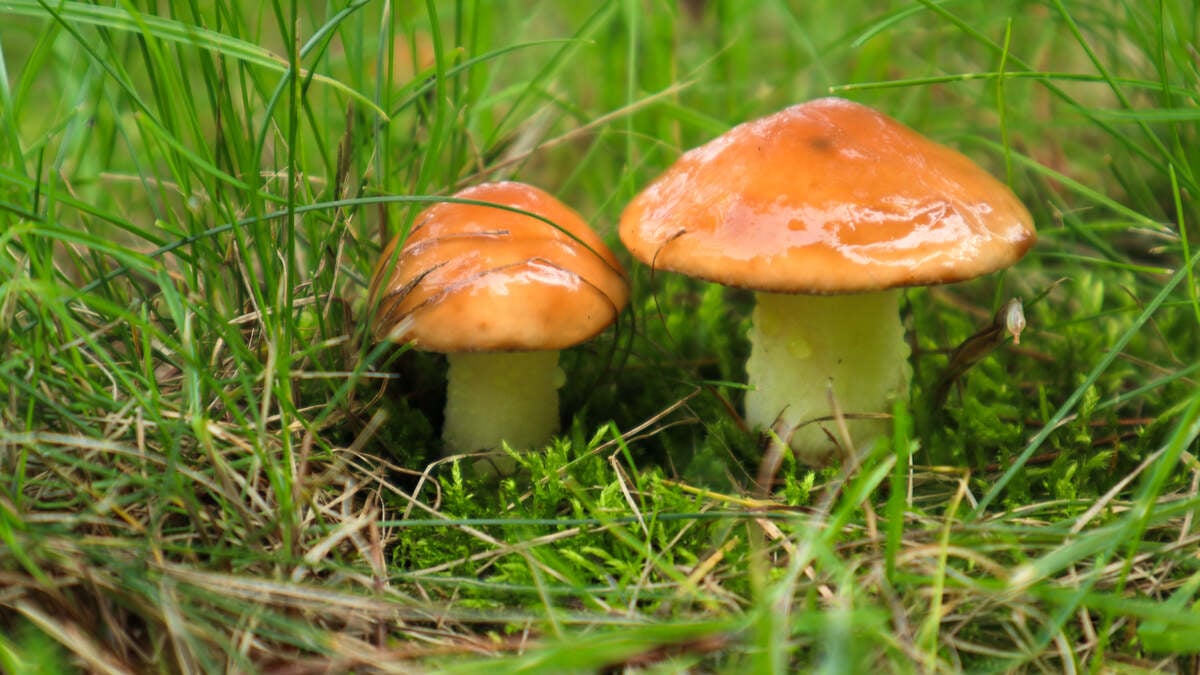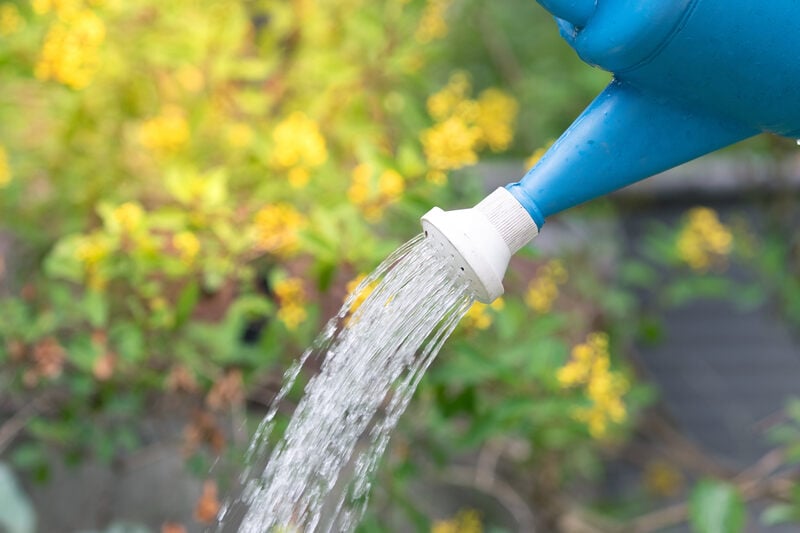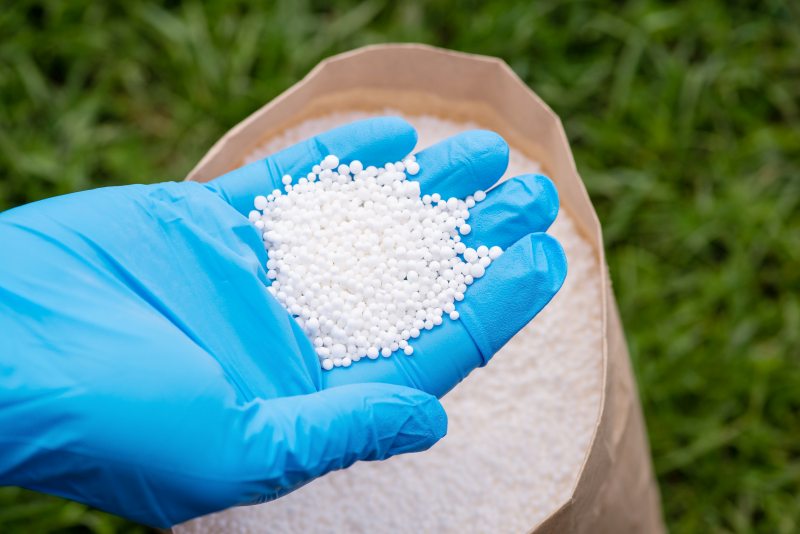
Getting rid of the mushrooms popping up on your lawn is easy yet annoying. It’s far more effective if you know how to prevent mushrooms in your yard.
Improve the drainage, lessen shaded areas, clear your lawn of organic matter, and apply high-nitrogen fertilizer to make your yard less hospitable to mushroom growth. Proper lawn care, such as mowing at the right height, adjusting your watering practices, dethatching, and aerating will also help.
1. Improve Drainage
One of the conditions that cause mushrooms to grow in your yard is poor drainage.
According to Gabrielle LaTora, agriculture and natural resources agent from the University of Georgia, stormwater runoff, which is “rain that hits impervious surfaces, like sidewalks, roads, and driveways, and flows downhill to low-lying areas,” is the most common source of standing water and increased moisture in yards and gardens.
Fixing low spots, leveling your yard properly, or even adding drainage solutions like French drains can make a big difference. When water flows away instead of being stagnant, your yard becomes less inviting to fungi. Proper drainage can even help get rid of mushrooms. If you think it’s too much work, you can hire a lawn care professional instead.
2. Adjust Watering Practices

Your watering practices are key to mushroom control. Try watering early in the morning to give the grass enough time to dry out during the day. Also, it’s best to water less frequently but more deeply to discourage mushrooms in your yard while encouraging stronger grass roots.
“Water the lawn once every week or two at the most,” suggests Jeremy Kichler, county extension coordinator at the University of Georgia.
LaTora adds that watering soil already saturated by rain is another surefire way to get puddles of water in your landscape. In turn, it can create consistently damp or soggy conditions, which mushrooms need to thrive.
Expert Tip: “A cheap rain gauge from the garden center is a good way to track weekly rainfall and allow you to adjust your watering schedule as needed,” suggests LaTora.
3. Clear Lawn of Organic Matter
Keeping your lawn clear of organic matter takes away one of mushrooms’ favorite food sources. According to Kichler, “Fungi are known to consume organic material, so clearing out buried wood, roots, piles of leaves, logs, limbs, and pet waste can discourage mushroom growth.”
My Tip: If you’re using organic mulch to prevent weeds in your flower beds or landscape, it will decompose over time and turn into mushroom food. You can avoid this by switching to another type of mulch that breaks down very slowly, if at all. I suggest using inorganic mulch like stone, gravel, or recycled tumbled glass.
4. Mow at the Correct Height

If you let your grass grow too tall, the dense canopy can trap moisture by blocking sunlight and restricting air flow near the soil surface. This humid condition makes it ideal for mushrooms to grow. By sticking to your grass type’s recommended mowing height, you’re preventing this excess moisture, depriving mushrooms of the conditions they need.
See Related: What is the One-Third Rule for Mowing Grass?
5. Dethatch

A thick thatch layer, usually over half an inch thick, traps moisture and decaying material right at the soil’s surface. This is the kind of environment mushrooms love, so it’s best to dethatch your lawn. You can use a thatch rake or rent a dethatching machine to break it up.
See Related: When to Dethatch Your Lawn
6. Aerate

Aerating your lawn once or twice a year helps water drain more effectively and allows grass roots to grow deeper. This simple fix not only keeps mushrooms in check but also prevents soil compaction.
7. Increase Sunlight
Trim back trees and bushes to let sunlight stream in. With more sunlight, there’s less dampness — resulting in drier soil and fewer mushrooms. Since plant roots help absorb excess moisture, you can also plant shade-loving groundcovers like bugleweed and Bishop’s hat to help keep the soil dry.
8. Apply High-Nitrogen Fertilizer

Mushrooms break down organic matter, but high-nitrogen fertilizer speeds up that process, leaving mushrooms with almost nothing to eat. At the same time, nitrogen can also boost grass growth, which can crowd out mushroom colonies.
FAQ About Preventing Mushrooms
Typically, mushrooms appear in lawns after rain in the spring and fall. But they can also grow in summer, especially in areas with summer downpours.
No, mushrooms don’t damage or kill the grass. While they’re quite unsightly, they don’t pose a threat to your turf.
No, mushrooms generally don’t mean your lawn is suffering from diseases. In fact, mushrooms here and there are a sign that your soil is rich in organic matter.
The Right Pros Can Help Prevent Mushrooms in Your Yard
If you keep your yard clean and your lawn healthy, it can help prevent mushroom growth in your yard. Since maintaining your yard can be tedious, hire a local lawn care pro who can do the hard work for you.
Sources:
- Gabrielle LaTora, agriculture and natural resources agent at the University of Georgia Extension, Fulton County. Personal interview.
- “I Have a Bunch of Mushrooms in the Yard!!!” By Jeremy Kichler, extension coordinator. University of Georgia Extension.
- Jeremy Kichler, county extension coordinator at the University of Georgia. Personal interview.
- “Managing Mushrooms in the Lawn.” Virginia Cooperative Extension.
- “Mushrooms in the Garden Beds.” Texas A&M University AgriLife Extension.
- “What Can I Do About Mushrooms in my Yard?” By Charlotte Glen, statewide coordinator. North Carolina Cooperative Extension.
- “Why Mushrooms Grow in my Yard (Sometimes).” By Justin Moore, marketing and communications director. North Carolina State University Extension.
Main Image Credit: Trik / Adobe Stock Free / License